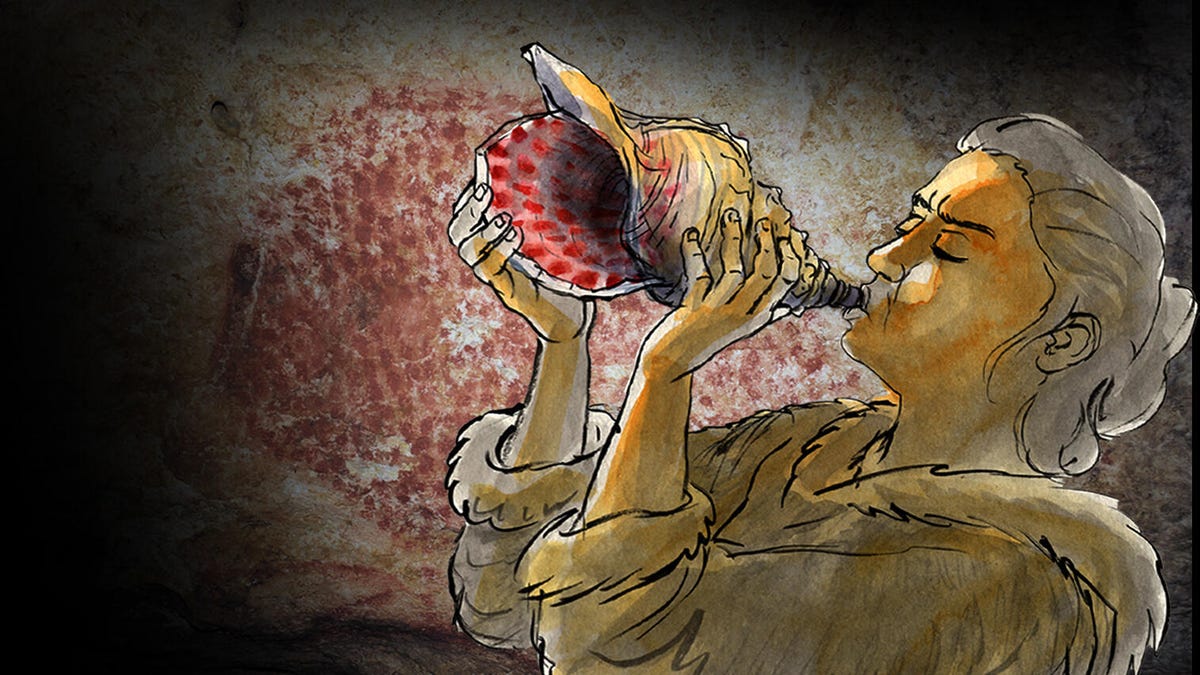Ancient conch shell horn blown for the first time in 18,000 years
The Marsoulas conch hasn't been heard since the late Stone Age.

The sound of the Marsoulas conch hasn't been heard for 18,000 years.
At the entrance to the Marsoulas cave in France's Pyrenean foothills, Henri Begouën and James Townsend Russell stumbled upon an exceptional find in 1931. A conch shell -- the hardened exoskeleton of a predatory sea snail -- lay empty at the mouth of a cave the men knew was once used by human ancestors in the late Stone Age. But, as exceptional as the find was, the researchers filed the conch away, believing it to have no sign of human modification.
But the forgotten shell, which was on display at the Muséum de Toulouse in France, has been reexamined by researchers some 80 years after its discovery, and they believe it to be the oldest shell-fashioned wind instrument yet discovered. The team says the Marsoulas conch was blown by members of the Magdalenian cultures, who lived in western Europe from about 21,000 to 14,000 years ago.
And they employed a musician to play the shell for the first time in millennia.
Their research, published Wednesday in the journal Science Advances, utilized high-fidelity X-ray scanning and fluorescence spectrometry to see how human hands had transformed the shell into a musical instrument. You can see an exceptional 3D rendering here.
Using the scans, the team were able to determine "impact points" where it appeared the shell had been modified. The most change was made to the shell's apex, the tough, pointy end, which the team believes was deliberately opened up to create a hole the conch player would blow air through. This, they reason, can't be an accidental break because it's typically the hardest part of a conch. The apex also appeared to have signs of a resin or wax, which may've been used to fix a mouthpiece to it, but there's not enough to determine its origin.
Red pigments found on the inside and outside of the shell were also present in Marsoulas Cave. It appears the Late Stone Age humans were finger painting, using their fingerprints to form elaborate art on the cave walls. However, the team couldn't determine if the faded ocher marks on the conch and the paintings on the cave walls were composed of the same chemicals, because of how they've faded over time.
The Marsoulas conch shell
Conch shells have been used as sacred objects or musical instruments across history, with the authors suggesting the previously oldest known shells have been discovered in the Mediterranean, from Ancient Greece.
With the case for the Marsoulas conch as a musical instrument strong, the team turned to a musicologist for confirmation. One very lucky horn player was able to reproduce the sounds of human prehistory, playing three notes: a C, C-sharp and a D.
In January last year, scientists were able to 3D-print the vocal tract of a 3,000-year-old mummy named Nesyamun and bring his voice back from the dead. But the re-creation was only able to sound out specific vowels and ended up sounding like an apathetic groan. Nesyamun's voice was back, but all he could do was "ehhhh."
The conch's tones, however, are deep and pleasant -- euphonious, even! You can listen to the three notes here.
Now, if we can just get the 3D-printed vocal tract of Nesyamun to blow air through the horn, who knows what eldritch horrors we might be able to unleash in 2021?

